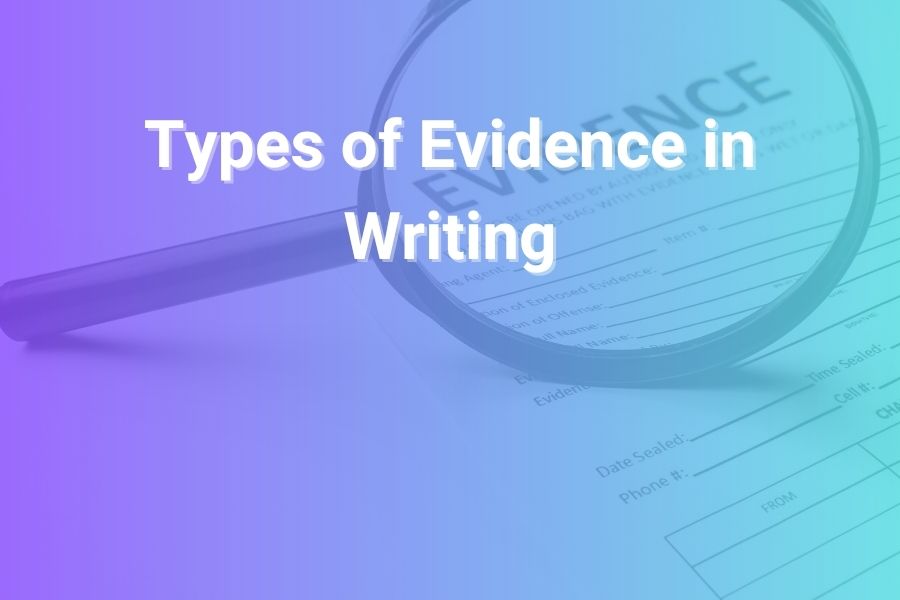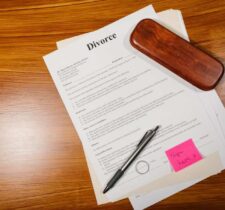Every strong piece of writing depends on evidence. Whether it’s an academic essay, a blog post, or a persuasive article, evidence helps writers build credibility, persuade readers, and support their claims with facts rather than opinions.
Without it, even the most confident argument can sound hollow. Understanding the different types of evidence allows a writer to choose the right proof for each purpose, improving clarity and persuasion.
In this article, you’ll learn what evidence means in writing, the major types of evidence, when to use them, and how to blend them effectively for stronger, more convincing writing.
Understanding What Evidence Means in Writing
Evidence in writing refers to the information or proof used to support a claim, argument, or idea. It bridges the gap between what the writer believes and what the reader needs to see before accepting that belief. In simple terms, evidence shows that you’ve done your research, thought critically, and can back up what you’re saying with verifiable support.
In essays or reports, evidence might include facts, statistics, expert opinions, examples, or quotes. In creative or reflective writing, evidence might appear as experiences, observations, or well-crafted analogies. The goal is the same: to convince the reader that your perspective is valid and grounded in truth.
Strong evidence does more than just fill space. It gives your writing credibility and depth. It encourages trust between writer and reader and turns abstract arguments into tangible ideas that readers can understand.
Why Evidence Matters in Writing
Every reader brings skepticism to a text. They want proof before accepting an idea. Evidence satisfies that skepticism. A 2024 survey by the National Council of Teachers of English found that 82% of educators believe teaching evidence use improves students’ overall writing confidence. This shows how central evidence has become—not just in academia, but in all forms of communication.
Using different types of evidence also enhances diversity in writing. A well-balanced piece blends data and human insight, making it informative yet relatable. Whether you’re writing about climate change, digital marketing, or personal growth, evidence turns broad claims into grounded arguments.
The Major Types of Evidence in Writing
There are several types of evidence writers use, each serving a unique purpose. Understanding them helps you decide which kind best supports your claim. Below are the main types of evidence with examples and practical tips.
- Statistical Evidence
Statistical evidence includes numbers, percentages, and data drawn from credible studies, surveys, or research findings. It’s one of the most persuasive forms because numbers feel objective and authoritative.
For example, stating that “online learning platforms grew by 22% in 2024” immediately adds weight to an argument about digital education. Statistics appeal to logic (logos), helping readers see measurable proof.
However, statistical evidence must come from recent and trustworthy sources. Outdated or manipulated data weakens credibility. When used correctly, though, numbers make arguments precise and irrefutable.
- Factual Evidence
Factual evidence involves information that can be proven true. It might include verified historical facts, dates, or events. For instance, saying “The Declaration of Independence was signed in 1776” is a factual statement that no reasonable person can dispute.
Writers use factual evidence to establish common ground or provide context before moving into analysis. It’s the foundation for more complex arguments and gives writing a sense of authority.
- Testimonial Evidence
Testimonial evidence comes from experts, professionals, or individuals with firsthand experience. It gives a human voice to your argument. For instance, quoting a psychologist about mental health trends strengthens your discussion more than offering an unsupported opinion.
In marketing, testimonials from satisfied clients serve the same function—they build trust. But in academic or professional writing, testimonials must come from credible, unbiased experts. Always evaluate their qualifications and relevance before quoting.
- Anecdotal Evidence
Anecdotal evidence uses short personal stories or observations to make a point. It’s often used in essays or articles that aim to connect emotionally with readers. For example, when discussing workplace burnout, a writer might share a story about working 70-hour weeks and realizing the toll it took on their health.
While anecdotes are compelling, they’re not always representative or statistically sound. They should supplement, not replace, other evidence types. When used sparingly and paired with factual or statistical support, anecdotes bring warmth and relatability to otherwise dry topics.
- Logical Evidence
Logical evidence relies on reasoning and analysis rather than data or personal experience. It connects facts to conclusions through clear thought processes. Writers use it when explaining cause-and-effect relationships, patterns, or implications.
For example: “If renewable energy becomes cheaper than fossil fuels, more nations will adopt it. As adoption increases, carbon emissions will decrease.” That’s a logical sequence that doesn’t rely on numbers or emotion but on rational connection.
Logical evidence strengthens essays that require analysis or explanation. It shows that the writer can think critically rather than simply repeat facts.
- Textual or Quoted Evidence
Quoted evidence comes directly from books, articles, speeches, or literary works. It’s vital in essays where interpretation of existing texts is required, such as literature analysis or policy critique.
For instance, quoting Martin Luther King Jr.’s “Letter from Birmingham Jail” adds authenticity to an essay on civil rights. The key is to integrate quotes smoothly—introduce them, explain their relevance, and link them back to your argument. Avoid over-quoting; your voice should always dominate.
- Analogical Evidence
Analogical evidence draws comparisons between two situations to make a point. It helps readers understand new ideas by relating them to familiar ones.
For example, comparing cybersecurity to a home alarm system makes a technical subject easier to grasp. Analogies simplify complex arguments while keeping them vivid and persuasive.
This type works best when the comparison is accurate and logical. A weak analogy can confuse readers or undermine your point.
- Empirical Evidence
Empirical evidence comes from observation, experience, or experiments. It’s the backbone of scientific and social research. When researchers conduct surveys, tests, or case studies, they’re collecting empirical evidence.
For example, a study observing that 70% of students who sleep less than six hours perform worse academically is empirical evidence. Writers can use such findings to support arguments about education, productivity, or health.
Empirical evidence adds credibility because it’s based on direct observation rather than assumption. It shows the writer has engaged with real-world data.
- Analogous and Visual Evidence
With the rise of digital media, visual evidence—charts, graphs, images, or infographics—has become increasingly powerful. Visuals present information faster and more clearly than long paragraphs of explanation.
Writers in business, journalism, and education often rely on this evidence to support claims. A simple bar chart comparing sales growth, for instance, instantly reinforces a written statement about company performance.
Visual evidence must be accurate and clearly labeled. Misleading visuals damage credibility and may misinform readers.
How to Choose the Right Type of Evidence
Selecting evidence depends on the purpose of your writing, your audience, and the nature of your claim. For an argumentative essay, factual and statistical evidence might dominate. For a narrative piece, anecdotal or testimonial evidence might work better.
Consider:
- The claim’s strength: The more controversial your argument, the stronger your evidence should be.
- The reader’s expectations: Academic readers expect citations and data. General readers value clarity and relevance.
- Balance: Mix evidence types to appeal to logic, emotion, and credibility.
A well-written piece doesn’t rely on one form of proof. It combines logic with empathy, creating writing that informs and resonates.
Common Mistakes Writers Make with Evidence
Many writers struggle not with finding evidence, but with using it effectively. Common mistakes include:
- Overusing quotes without explaining their meaning.
- Citing outdated statistics.
- Depending too heavily on personal anecdotes.
- Failing to connect evidence back to the thesis.
Evidence should never sit in isolation. Every piece must be introduced, explained, and linked to the argument. This creates cohesion and ensures readers understand why it matters.
How to Integrate Evidence Smoothly
The best writers make evidence flow naturally within their writing. Here’s a simple three-step formula:
- Introduce the evidence. Lead into it by stating why it’s relevant.
- Present the evidence. Use a quote, statistic, or example.
- Explain the significance. Connect it back to your main point.
For instance: “Research from 2025 shows that employees who receive regular feedback are 45% more engaged. This supports the idea that communication drives productivity.”
This structure ensures your evidence strengthens your point instead of interrupting it.
Blending Different Types of Evidence
The most persuasive writing rarely relies on one type of evidence. Combining logic, emotion, and credibility creates a well-rounded argument. For example, a piece on climate change could blend:
- Statistical evidence: carbon emissions data.
- Testimonial evidence: quotes from scientists.
- Anecdotal evidence: stories from communities affected by floods.
Together, these create a narrative that appeals to both heart and mind.
Recent Trends in Evidence-Based Writing
In 2025, digital literacy and AI-generated content have changed how writers use evidence. Readers now demand transparency, accuracy, and fact-checking more than ever. Studies show that articles with verified data points and clear references hold readers’ attention 40% longer than unverified content.
Writers are also learning to present evidence visually—through charts or infographics—to engage modern audiences who prefer quick understanding. As attention spans shrink, clear evidence presentation is no longer optional; it’s essential.
Building Credibility Through Strong Evidence
Ultimately, the power of your writing lies in how you earn trust. Every claim must show proof. Every proof must link logically to your argument. The balance of fact, emotion, and reasoning keeps readers both convinced and engaged.
Strong evidence transforms opinion into authority. It turns guesswork into grounded analysis. Whether you’re crafting a research paper, blog post, or editorial, mastering evidence isn’t just about convincing others—it’s about writing with integrity.
Conclusion: Mastering the Art of Evidence in Writing
Evidence is the skeleton of strong writing. It supports ideas, persuades readers, and brings logic and emotion together. Understanding its types—from statistics to anecdotes—empowers writers to adapt to any topic and audience.
In an era of information overload, credible, well-chosen evidence separates skilled writers from casual commentators. When you use evidence deliberately, you don’t just prove your point—you build trust, demonstrate expertise, and make your voice stand out in a crowded digital world.







